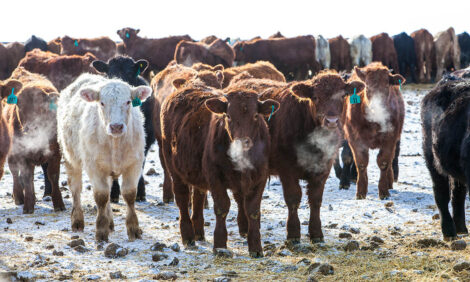



Calves: Feeding to Fight Disease
A calf can get sick in a number of ways but nutrition, along with housing and hygiene, are the three core points to get the calf better, write advisers at the Ontario Veal Association.Calves also are particularly susceptible to disease when they have been transported or exposed to calves from other farms.
Nutrition is critical to fighting disease by providing calves with the resources they need. Never with hold milk from scouring calves because they require energy and protein to meet maintenance requirements, fight disease and grow.
The fact that stress, including nutrient deficiency, impairs immune responses is well-documented. Conventional feeding of only 10 percent of body weight may not meet the calf’s requirements, particularly when the requirements change, such as with cold stress, heat stress or disease.
Intensified feeding programs have been shown to increase some immune responses and decrease others but with unknown effects on actual calf health.
However, recent research out of Cornell University has shown that increasing feeding levels of milk can help calves fight the effects of the parasite Cryptosporidium parvum. Calves were experimentally challenged with C. parvum (resulting in a 100 percent incidence of diarrhea) and fed conventional nutrition or a high plane of nutrition, and followed for 21 days.
Those on conventional nutrition were given 20/20 milk replacer fed at 1 pound per day and providing 2.4 megacalories of energy per day (Mcal/d). Those on the high plane of nutrition received 28/20 milk replacer fed at 2.5 pounds/day, providing 5 megacalories of energy per day.
Maintenance requirements are 1.75 Mcal/d. Calves in both groups had similar starting body weights, total protein (measure of antibodies) and dehydration status before they were infected. While nutritional treatment did not affect the peak, total amount, onset or duration of shedding of C. parvum, those fed the high plane of nutrition diet improved faster.
Conventional nutrition calves showed dehydration (high plane of nutrition did not) and experienced weight loss, whereas high plane of nutrition calves grew and recovered from diarrhea faster.
Ensuring you are feeding beyond maintenance requirements is important not only to allow for growth
but to help calves fi ght disease. Make sure sick calves are getting the milk they need. However, an ounce of prevention is worth a pound of cure; proper colostrum delivery, housing and hygiene continue to go a long way in creating healthy calves.
Source: Ontario Veal Association



